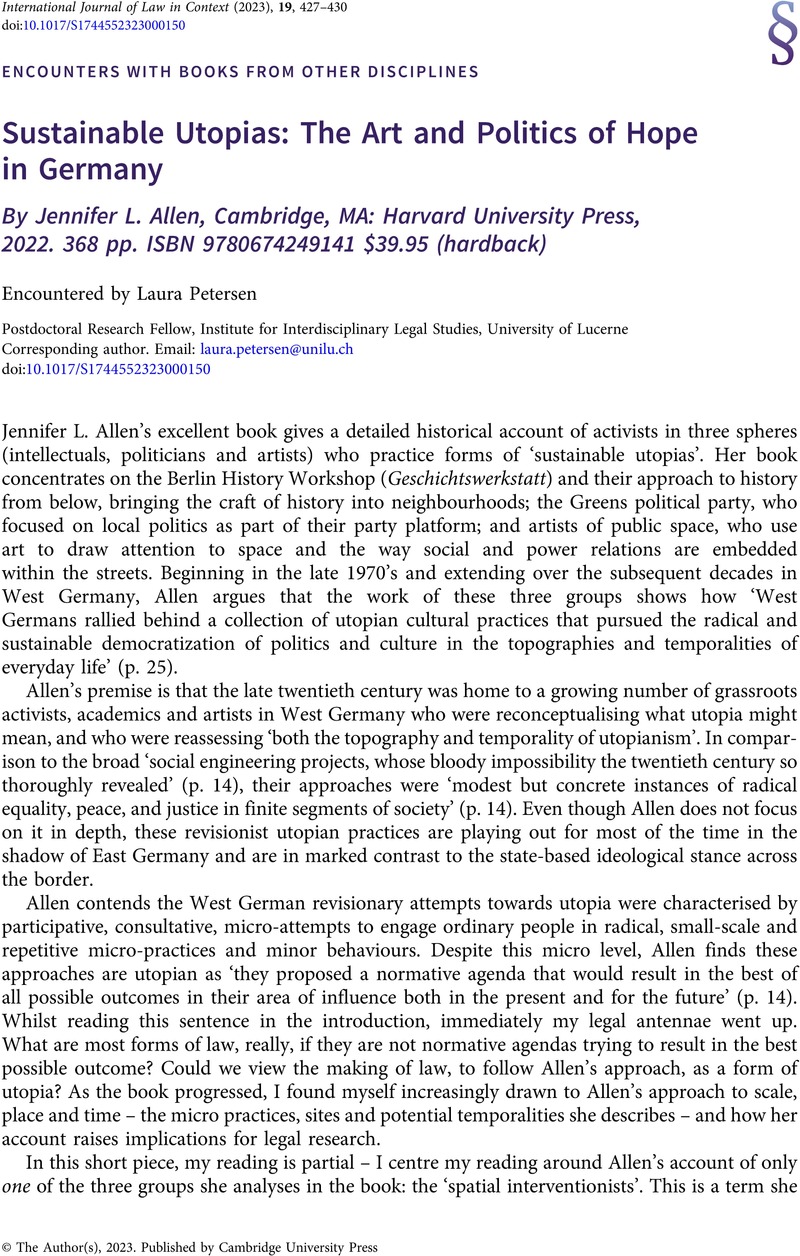No CrossRef data available.
Article contents
Sustainable Utopias: The Art and Politics of Hope in Germany By Jennifer L. Allen, Cambridge, MA: Harvard University Press, 2022. 368 pp. ISBN 9780674249141 $39.95 (hardback)
Review products
Sustainable Utopias: The Art and Politics of Hope in Germany By Jennifer L. Allen, Cambridge, MA: Harvard University Press, 2022. 368 pp. ISBN 9780674249141 $39.95 (hardback)
Published online by Cambridge University Press: 14 June 2023
Abstract
An abstract is not available for this content so a preview has been provided. Please use the Get access link above for information on how to access this content.

- Type
- Encounters with Books from Other Disciplines
- Information
- International Journal of Law in Context , Volume 19 , Special Issue 3: ‘Law in Context’ in Post-Colonial South Asia , September 2023 , pp. 427 - 430
- Copyright
- © The Author(s), 2023. Published by Cambridge University Press
References
Bal, M (2001) Louise Bourgeois’ Spider: The Architecture of Art-Writing. Chicago: University of Chicago Press.Google Scholar
Barr, O (2019) How to Notice Kaleidoscopic Legal Places: Lessons From a Mural, a Street in Redfern, and Walking the City on Aboriginal Country. [OnlineFirst, 25 November 2019] Law, Culture and the Humanities.10.1177/1743872119878059CrossRefGoogle Scholar
Manderson, D (2021) Force of Wall. Law & Literature 33, 365–388.10.1080/1535685X.2020.1827522CrossRefGoogle Scholar
de Sousa Santos, B (1987) Law: A Map of Misreading. Toward a Postmodern Conception of Law. Journal of Law and Society 14, 279–302.10.2307/1410186CrossRefGoogle Scholar
Wall, I (2019) The Ordinary Affects of Law. [OnlineFirst, 16 November 2019] Law, Culture and the Humanities.10.1177/1743872119886509CrossRefGoogle Scholar


